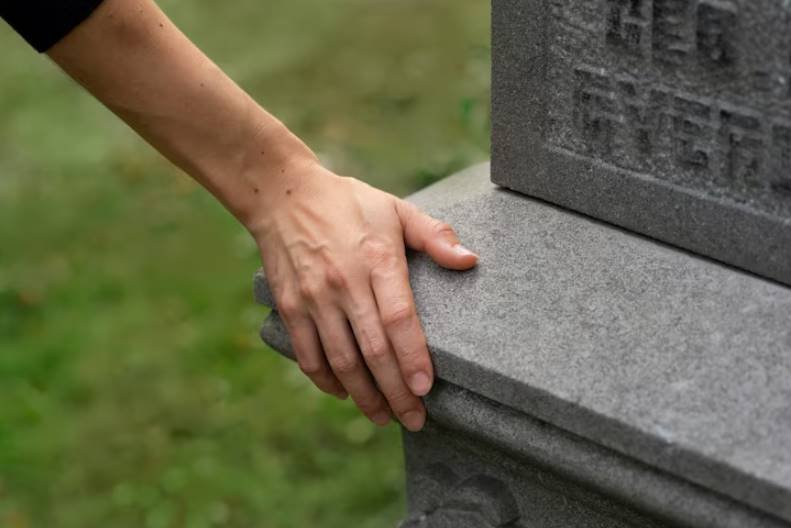A cemetery is a peaceful and sacred place where we pay our respects to those who have passed away. It is a place where we can find comfort, solace, and a connection to our loved ones who are no longer with us. However, as we walk through a cemetery, we may notice skips and wonder what these structures are and their purpose. In this article, we’ll explore what skips in cemeteries are, their history, and their significance.
What is a Skip and how it works?
When it comes to burials, a skip is a large metal container that is used to collect the soil dug up during the process of digging the grave. A skip can also be used to support the sides of the grave while the coffin is being lowered into it.
As the soil is removed from the grave, it’s placed inside the skip and hauled away once the burial is complete. Skips are heavy-duty containers that can hold a considerable amount of soil, so they are ideal for the task at hand.

Why are Skips important in Christian burials?
Skips play a significant role in Christian burials, particularly in Anglican and Catholic denominations. According to Christian belief, a person who has died is to return to the earth, which is regarded as the final resting place for the deceased.
During the burial, the coffin is lowered into the ground, and soil is then placed on top. In Christian burials, this soil should be taken from the immediate area at the graveside, and it should not be brought from elsewhere. This is where skips come in handy, as they allow this process to be carried out correctly.
History of Skips in Cemeteries
The use of skips in cemeteries dates back to the 19th century when the industrial revolution led to an increase in urbanization. As cities grew, cemeteries became overcrowded, and there was a need for more efficient and practical ways of digging graves. Skips allowed cemetery workers to dig more graves in a shorter amount of time while keeping the cemetery clean and organized.
Significance of Skips in Cemeteries
Skips play a crucial role in the burial process. They enable workers to dig graves without disrupting the surrounding graves or causing damage to the cemetery’s landscape. Skips also allow the workers to control the amount of dirt and debris that comes out of the gravesite, reducing the risk of contamination or soil erosion.
Types of Skips
There are different types of skips, and they vary depending on their size, shape, and material. The most common types of skips used in cemeteries are: – Metal skips – Wooden skips – Concrete skips Metal skips are lightweight, durable, and easy to move around. They are ideal for cemetery workers who need to transport dirt and debris from one area of the cemetery to another. Wooden skips are heavier and more cumbersome, but they are also sturdy and can hold more weight. Concrete skips are the most robust and durable and can withstand the elements, making them ideal for long-term use.
Skips use for Burial without a Coffin
In some cases, skips can also be used for burials without a coffin. This is a rare practice, but it can be seen in some Christian denominations where the body is wrapped in a shroud or a cloth and then buried directly in the earth. Skips are used to collect the soil that is removed during the process of digging the grave, as the body is placed directly on the ground.
Important things to know about Skips
- Skips must be clean and free from debris before they can be used for burial.
- The soil used to cover the grave must be taken only from the immediate area to ensure that the deceased returns to the earth from which they came.
- The use of skips may vary from cemetery to cemetery, and it’s best to check with your local cemetery for their specific regulations.
Conclusion
Skips are a crucial tool in the burial process, allowing cemetery workers to dig graves efficiently and with minimal disturbance to the surrounding graves and landscape. Understanding the history and significance of skips can deepen our appreciation for the work that goes into maintaining a cemetery’s peaceful and sacred atmosphere. By learning about skips, we can gain a greater sense of connection to the lives and legacies of those who have passed away.
FAQs about Skips in Cemeteries
Q: Do skips damage the cemetery’s landscape?
A: No, skips are designed to minimize damage to the surrounding landscape. Workers use them to collect and store the dirt and debris, making it easier to return the grave to its original state after the burial.
Q: How long does it take to dig a grave using a skip?
A: It depends on the size and depth of the grave and the type of soil. On average, it takes about 4-6 hours to dig a grave using a skip.
Q: Are skips environmentally friendly?
A: Yes, skips are an eco-friendly option for digging graves. They allow workers to control the amount of dirt and debris that comes out of the gravesite, reducing the risk of soil erosion and contamination.
Q: What is a skip in a cemetery?
A: A skip in a cemetery refers to the practice of skipping or leaving a small space between burial plots when arranging them in a graveyard. This is done for various reasons, including future expansion, ease of access, and maintenance purposes.
Q: Why is it necessary to have skips in a cemetery?
A: Skips in a cemetery are necessary for several reasons. They provide room for future expansion, allowing cemeteries to accommodate more burial plots as needed. Additionally, skips ensure easier access for both visitors and maintenance crews, helping to keep the cemetery well-maintained and presentable.
Q: How much space is typically left as a skip in a cemetery?
A: The amount of space left as a skip in a cemetery may vary depending on local regulations and the specific layout of the graveyard. Generally, a skip can range from a few inches to a couple of feet wide, ensuring enough room for walkways and maintenance access.
Q: Can I request a specific space as a skip in a cemetery for my family’s burial plot?
A: While you can express your preferences to the cemetery management, they will ultimately decide the placement of skips based on their established guidelines, available space, and overall layout. It’s always a good idea to discuss your wishes with the cemetery administration to see if they can accommodate your request.
Q: Do all cemeteries use skips, or is it specific to certain regions or cultures?
A: The practice of using skips in a cemetery is not exclusive to any particular region or culture. However, the prevalence and size of skips may differ based on local customs, regulations, and cemetery design. If you’re curious about a specific cemetery’s practices, it’s best to contact them directly for more information.


















